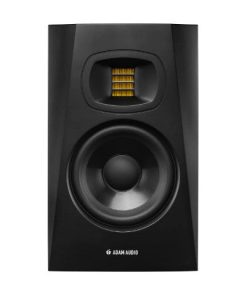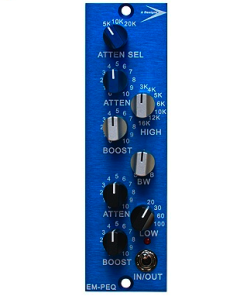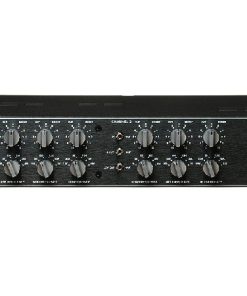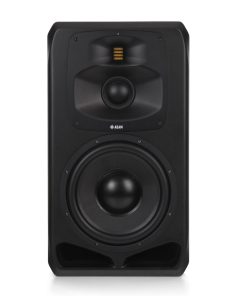Arturia DX7 V License – FM Made Easy Arturia
$ 149,00 $ 59,60
The DX7 brought digital synthesis to everyday musicians, transformed the sound of the charts, and won the title of best-selling synth of all time. DX7 V is a software reimagining of the icon, bringing that iconic glassy, punchy, crystal-clear sound to your DAW.
FM the way it wasmeant to be heard.
FM synthesis exploded the sonic palette of keyboardists and producers almost overnight.
Going where analog doesn’t, it’s still one of the most versatile approaches to sound-making there is. But musicians found the original DX difficult to program and lacking in real-time control. DX7 V amps up the advantages, loses the limitations, and adds tons of functionality that put it right at home in a modern music making rig.
Back to the…
Need to nail that ’80s chart-topping sound of Sting, Tina Turner, or anything that happened within a mile of David Foster? DX7 V has you covered.
Cutting Edge
Struck, plucked, and bowed sounds were the DX’s specialty, as were percussive keyboards like EPs and Clavs. Hear that FM edge rendered with loving precision.
Digital Personality
From FM classics to lilting pads and sparkling motion-synth soundscapes, listeners will wonder how you got “that” sound.
Well Behaved
Expanded wIth tons of tempo-syncing and MIDI mapping features, DX7 V’s classic sound fits into the modern workflow without a hitch.
Music for theMasses
FM easily produced sounds that eluded analog synths.
When the DX made it affordable, everybody wanted one — and pretty much everybody got one.
Once the exploratory genius of a Stanford University professor met the marketing savvy and production capacity of the world’s largest musical instrument maker, keyboards would never be the same again. After its introduction in 1983, it would go on to sell over 200,000 units and define countless sounds from the ‘80s and beyond.
FM is a simple idea at its core: audio-rate modulation of one waveform by another. But it was Dr. John Chowning of Stanford University who made FM viable as a synthesis method all on its own. His work proved that by carefully tuning the modulating waveforms, you could duplicate the harmonic profiles of all sorts of acoustic instruments.
Main Features
- 32 original DX7 algorithm
- All DX7 original parameters
- Original DX7 SysEx import
- 25 available waveforms per operators
- 6 Operators with multi-mode filter and feedback per operators
- DX7, DADSR and Multi-Segments envelopes (syncable and loopable) per operators
- 2 Modulation envelopes
- 4 assignable macros
- Advanced modulation matrix
- A step sequencer, 2 LFOs with 6 waveforms and an arpeggiator
- 4 FXs slots that can be routed in parallel or in serie
- An oscilloscope
- Vintage and Modern DAC Mode for a proper emulation of the DX7 converter
- 32 voices of polyphony
- 4 voices of unison with unison detune
- 432 factory presets
Platform specifications
Windows
- Win 8.1+ (64bit)
- 4 GB RAM
- 2.5 GHz CPU
- 2GB free hard disk space
- OpenGL 2.0 compatible GPU
Required configuration
- Works in Standalone, VST, AAX, Audio Unit, NKS (64-bit DAWs only).
Apple
- Mac OS 10.13+
- 4 GB RAM
- 2.5 GHz CPU
- 2GB free hard disk space
- OpenGL 2.0 compatible GPU
Protection
- The software is protected by the Arturia Software Center.
Prompt Delivery and Professional Packaging
Our long-standing partnership with UPS FedEx DHL and other global carriers lets us offer a range of shipping services. Our warehouse staff is extremely skilled and will package your items according to our precise and exact specifications. Your goods will undergo an extensive inspection and be safely packaged prior to being sent out. Each day, we ship to thousands of customers in many countries. The fact that we are committed to becoming the biggest online retailer in the World is clear. These warehouses are in Europe in the same way as they are in USA.
Note: Orders that include more than one item are assigned a processing period depending on the item.
Before shipping, we will inspect thoroughly the items you have ordered. Most orders are shipped within 48 hours. Expected delivery time is between 3-7 days.
Returns
Stock is dynamic. It's not entirely managed by us since we are involved with multiple entities, including the factory and the storage. The actual stock can change at any moment. It is possible that your order may be out of stock once the order has been placed.
Our policy lasts for 30 days. We cannot exchange or refund your order if it has been 30 days from the date of purchase.
For your item to be returned it must be in its original packaging, unopened and in the condition you received it. The item must be in its original packaging.
Related products
Monitor
Headphones
Recording Equipments
Headphones
Monitor Systems
Microphones
Microphones
Microphones
Microphones
Monitor
Accessories
Monitor Systems
Accessories
500 Series
Monitor Systems
Equalizers
Subwoofer
Monitor
Equalizers
Monitor Systems
Recording Equipments
Mic Preamp
Recording Equipments
Monitor
Microphones
Accessories
Monitor
































































